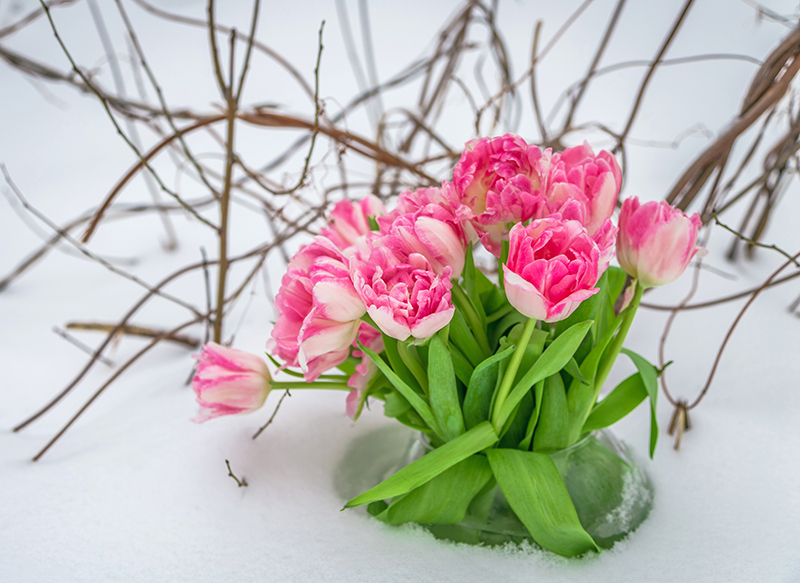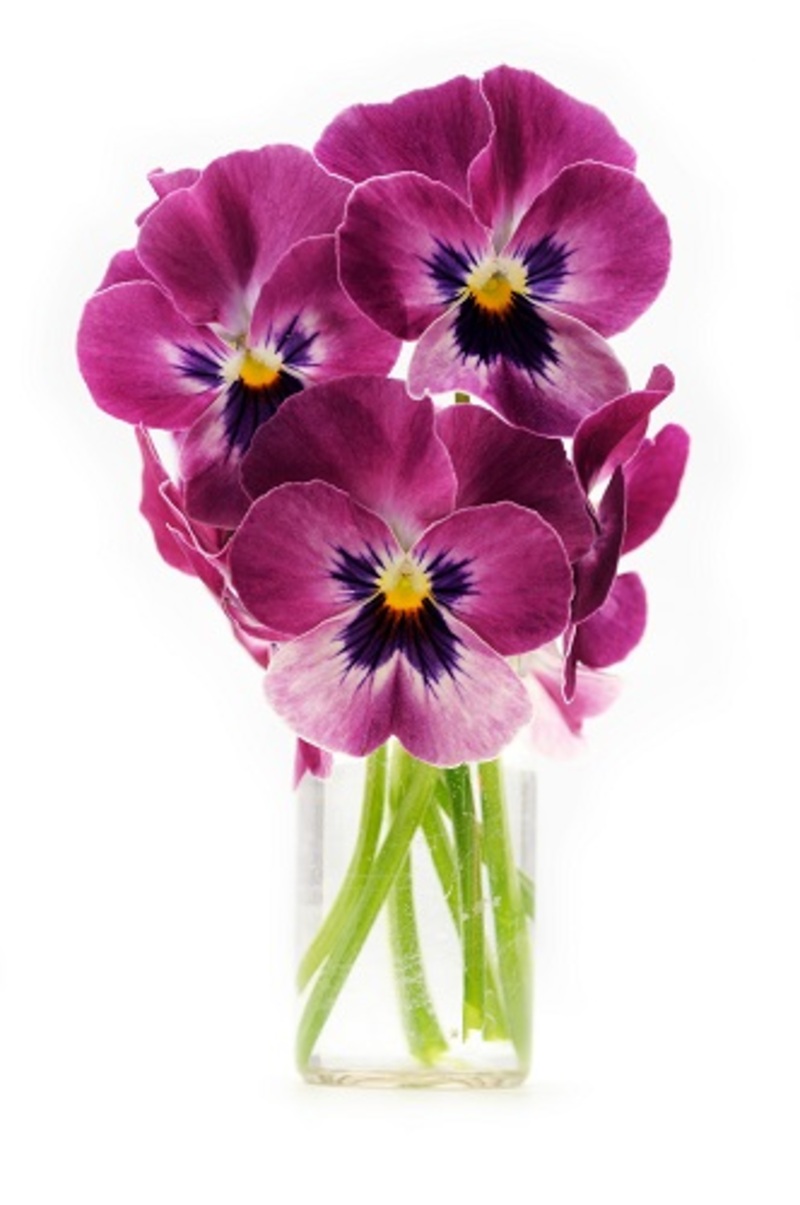Achieve Extended Poinsettia Liveliness This Year
Posted on 26/08/2025
Achieve Extended Poinsettia Liveliness This Year
Poinsettias are beloved for their vibrant blooms and festive charm, making them one of the most popular decorative plants during the holiday season. But what if you could enjoy your poinsettia's beauty beyond December? With the right care, you can achieve extended poinsettia liveliness this year and cherish their color and vitality far past the holidays.
Understanding the Poinsettia
The poinsettia (Euphorbia pulcherrima) originates from Mexico and Central America, where it blooms as a perennial shrub. Its brilliant red, pink, white, or variegated "flowers" are actually colored bracts--modified leaves that surround the plant's tiny true flowers. To prolong poinsettia color and vibrancy at home, it's important to understand its natural preferences and lifecycle.
Why Do Poinsettias Fade?
- Improper watering practices
- Exposure to cold drafts or sudden temperature changes
- Insufficient light
- Overfertilization or lack of nutrients
- Natural life cycle after the holiday blooming period
By being mindful of these issues, you can keep your poinsettia thriving for much longer than the average display period.

Choose Healthy Poinsettias for a Good Start
Start your journey to maximized poinsettia lifespan by selecting healthy specimens. When shopping, look for:
- Bracts that are brightly colored and undamaged
- Dense, rich green leaves all over the plant
- Sturdy, upright stems without signs of disease
- Small yellow flower buds (cyathia) intact in the center
A point to remember: Keep your new plant warm on the trip home. Poinsettias are sensitive to cold, and even a brief exposure can lead to leaf drop.
How to Ensure Extended Poinsettia Liveliness
Once at home, several ongoing care steps are needed to extend poinsettia freshness and beauty.
1. Optimal Light Conditions
Poinsettias thrive with bright, indirect light. Place yours near a sunny window--but take care the leaves do not touch cold glass, as this can damage them. In winter, southern or eastern exposures are ideal for providing at least 6 hours of indirect sunlight daily. Rotate the plant every week to encourage even growth and color longevity.
2. The Perfect Temperature
- During the day: 65-70?F (18-21?C)
- At night: 60-65?F (15-18?C)
Keep your poinsettia away from hot radiators, fireplaces, drafty windows, or doors to prevent stress. Sudden temperature changes can shorten the life of the bracts, so provide consistent warmth for a longer-lasting display.
3. Water Wisely for Longer Liveliness
Proper watering is essential for extended life:
- Check the soil every few days; water when the top inch feels dry.
- Use room-temperature water, avoiding the leaves and bracts.
- Ensure good drainage. Never let the pot sit in excess water, as roots are prone to rot.
- Empty decorative foil or saucers after watering.
Remember: Overwatering kills more poinsettias than underwatering!
4. Humidity Helps!
Poinsettias dislike dry indoor air, especially when heating systems run constantly. Increase humidity by:
- Grouping with other plants
- Placing a tray of pebbles and water beneath the pot
- Occasional gentle misting
5. Avoiding Poinsettia Stress
- Do not expose to cold drafts or direct heat sources.
- Keep away from fruit bowls--some fruits off-gas ethylene, which hastens bract drop.
- Handle gently; bruised leaves drop quickly.
Fertilizing for Sustained Color and Growth
Extend your poinsettia's vigor by feeding it after the holidays:
- No fertilizer is needed while in bloom.
- After bracts begin to fade (sometime in late winter/early spring), use a balanced, water-soluble fertilizer every 2-4 weeks.
This regime will encourage new leaves and can prepare the plant for reblooming next season.
Repotting for Extended Liveliness
Once the risk of frost has passed and bracts have faded, you can repot your poinsettia:
- Trim stems back to 4-6 inches above soil level.
- Repot in fresh, well-draining potting mix.
- Move outdoors for summer if possible, in a location with dappled light but protected from wind.
Encourage Poinsettia Rebloom for Next Year
If you want to achieve extended poinsettia life cycle and continued blooms, follow this sequence:
Late Winter/Early Spring
Once the colored bracts fade, cut the stems back to 4-6 inches and repot. Resume regular watering and feeding as new growth appears.
Late Spring and Summer
When nighttime temperatures remain above 55?F (13?C), move your poinsettia outdoors to a shady, protected spot. Pinch back new growth in June, July, and early August to encourage bushiness.
Late Summer
- Bring your plant indoors before nights drop below 55?F (13?C).
- Place in bright, indirect light, keep soil moist, and fertilize monthly.
To Rebloom: Controlling Day Length
Poinsettias are photoperiodic--they require long nights to set new colorful bracts. To achieve holiday color again:
- Beginning in early October, cover your plant with a box or place in a dark closet for 14 hours every night.
- Expose to bright, indirect light during the day for 6-8 hours.
- Continue this routine for at least 8-10 weeks, until your poinsettia's bracts begin to color.
Remember--missed or interrupted dark cycles will delay or prevent blooming. Consistency is critical for beautiful results!
Common Issues and How to Prevent Them
Even with expert care, sometimes problems arise. Here's how to tackle common issues:
Dropped Leaves or Bracts
- Usually caused by cold, drafts, or sudden changes in temperature.
- Solution: Move to a warmer location with stable temps.
Wilting or Rotting
- Most often due to overwatering or poor drainage.
- Solution: Ensure proper watering and remove standing water.
No Color on Bracts
- Insufficient darkness during photoperiod manipulation in the fall.
- Solution: Provide uninterrupted darkness as described above.
FAQs About Long-Lasting Poinsettias
Can I keep my poinsettia outdoors after the holidays?
Only if you live in USDA Zones 9-11, where winters are mild. Elsewhere, keep it indoors or move outside only after all danger of frost is past.
Do poinsettias rebloom easily?
With patience and correct day-length treatment, yes! Providing strict light control from October is the key to extended poinsettia blooms.
Are poinsettias poisonous to pets?
Poinsettias are not highly toxic, but their latex sap can cause mild mouth or stomach irritation if ingested by pets or humans. Keep out of reach for safety.
Creative Ways to Showcase Long-Lived Poinsettias
Celebrate your gardening success! Here are some attractive ways to display your long-lasting poinsettias:
- Combine with other houseplants in a seasonal arrangement for year-round color.
- Replant outdoors in summer for a bold, exotic accent in the garden.
- Gift home-propagated cuttings to friends next Christmas.
- Use in centerpieces with natural elements like pinecones, berries, and evergreen sprigs.

Tips For Achieving Extended Poinsettia Liveliness This Year
- Select vigorous, undamaged plants to start.
- Place in bright, indirect light; avoid drafts.
- Maintain optimal temperature and humidity.
- Water only when needed, never allowing roots to sit in water.
- Feed monthly after bloom for robust growth.
- Trim and repot as bracts fade for long-term vigor.
- Strict darkness in autumn for fresh bracts next season.
Conclusion: Enjoy Poinsettia Brilliance All Year Long
With these proven methods, you can achieve extended poinsettia liveliness well beyond the winter festivities. Whether your goal is to maintain colorful bracts into the spring or successfully coax a second bloom, these tips will ensure your favorite holiday plant remains a vibrant part of your home. Experience the joy of long-lasting poinsettias and bring a touch of holiday cheer to every season!
Ready for a year of beauty? Begin today--your healthy, thriving poinsettia awaits!
Latest Posts
A Resident's Review: Flower Delivery Experience in [POSTCODE]
Case Study: Transforming a [BOROUGH/NEIGHBOURHOOD] Business with Flowers
Achieve Extended Poinsettia Liveliness This Year





